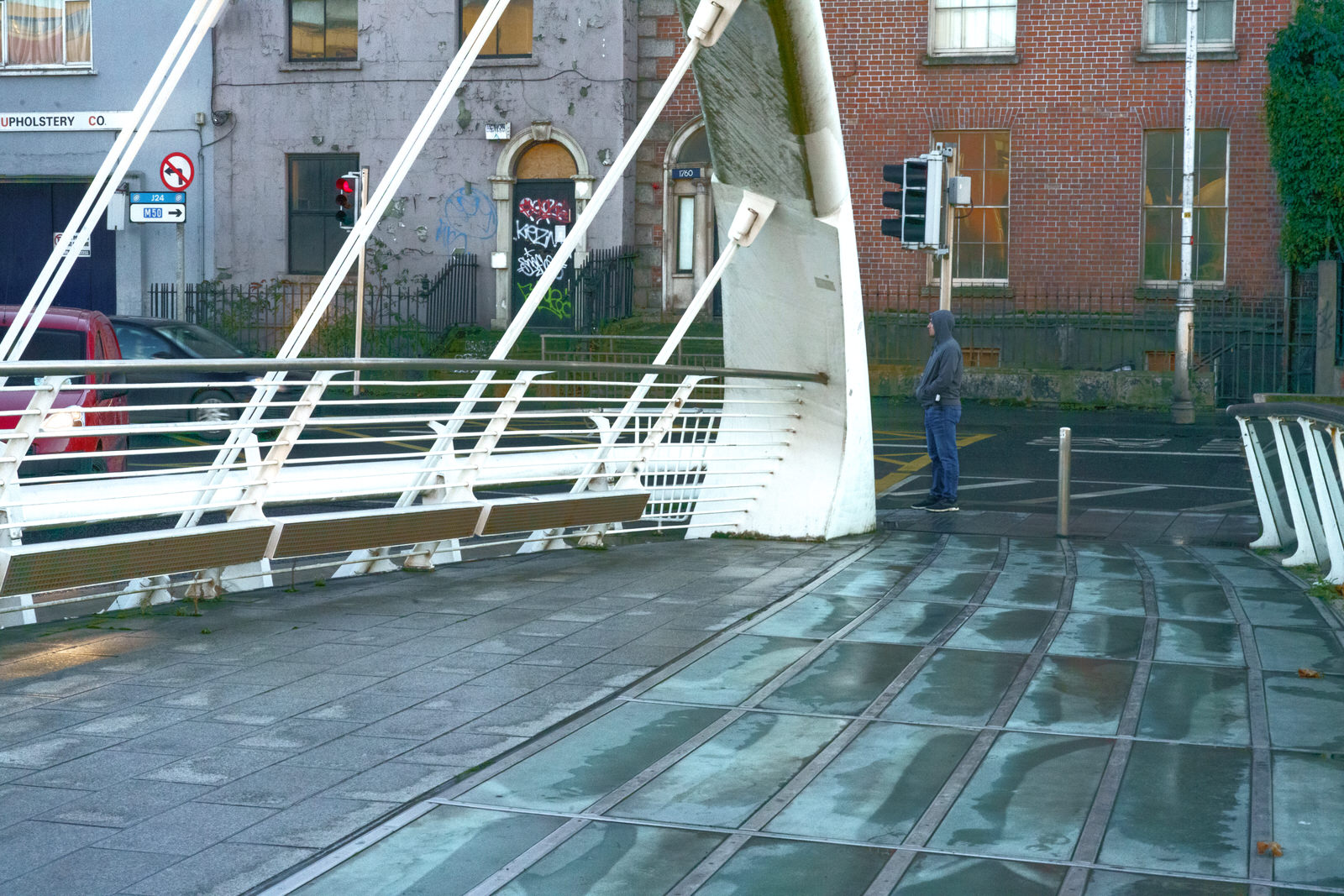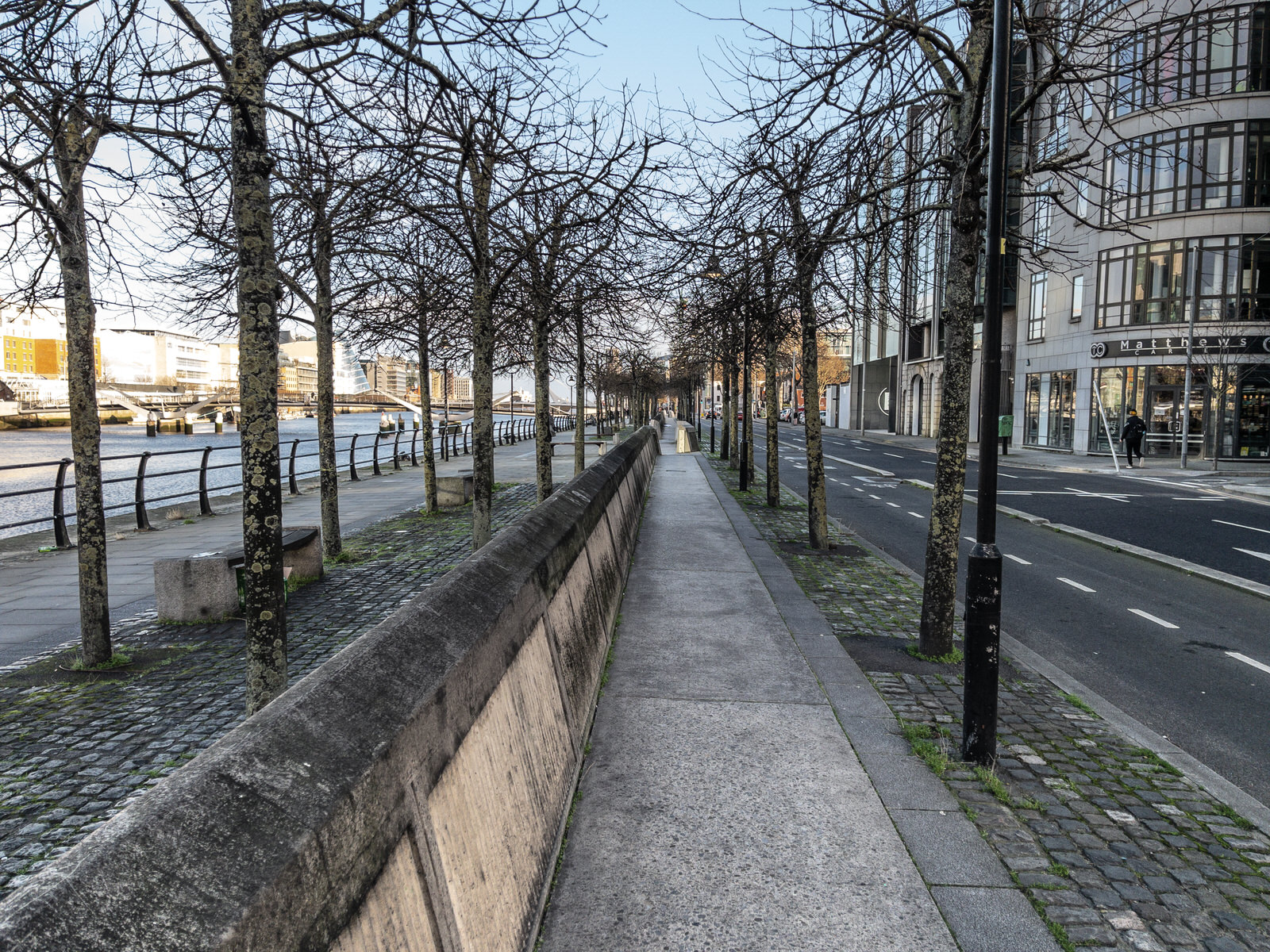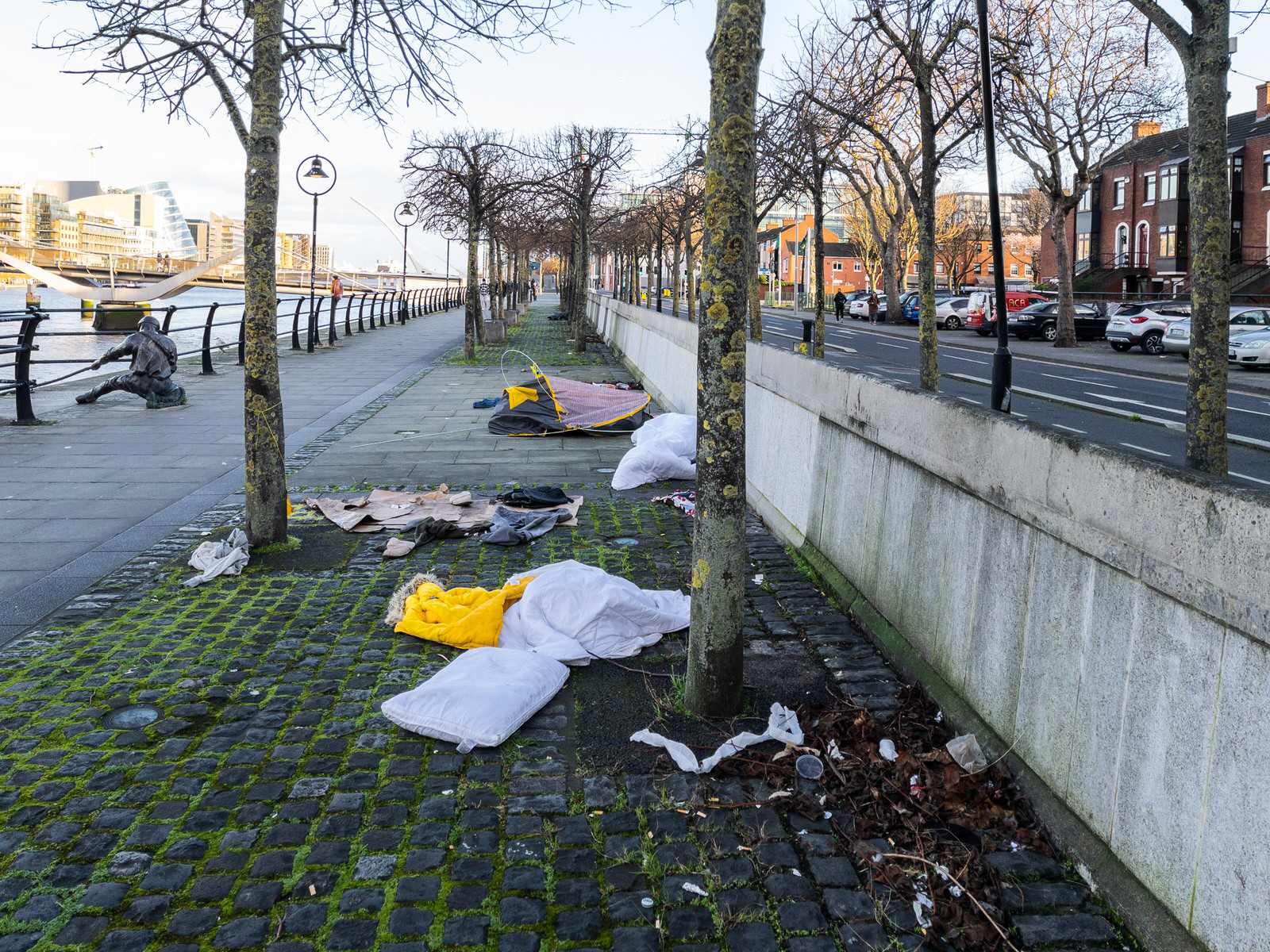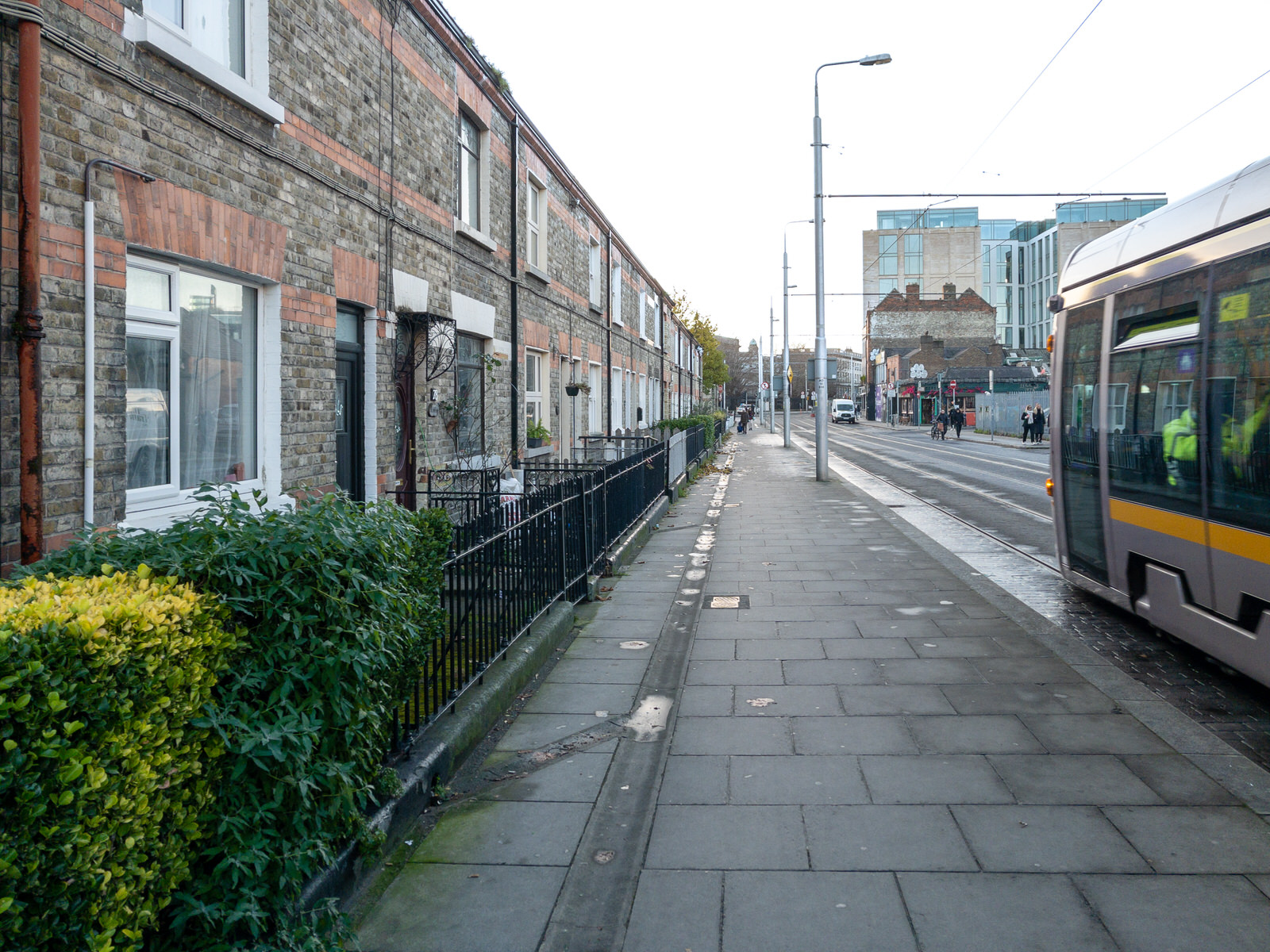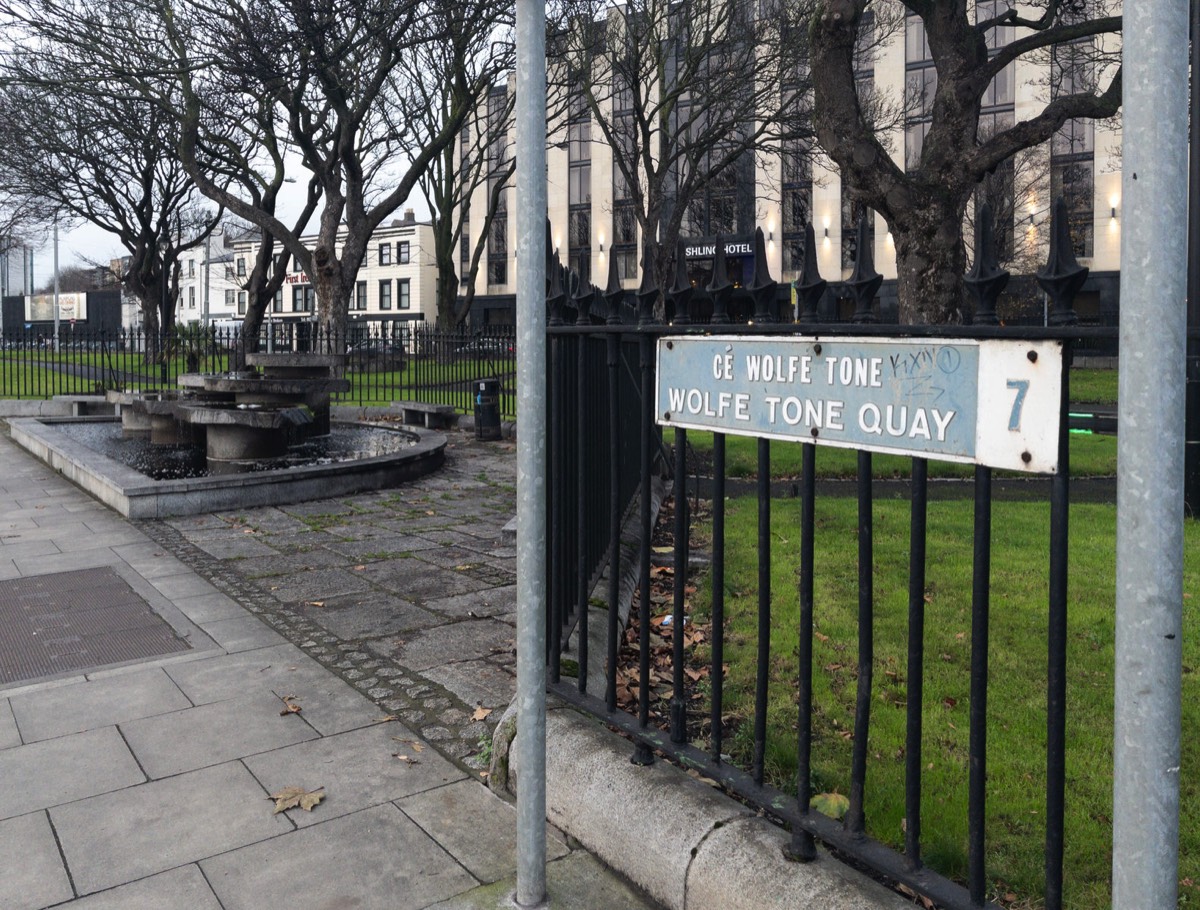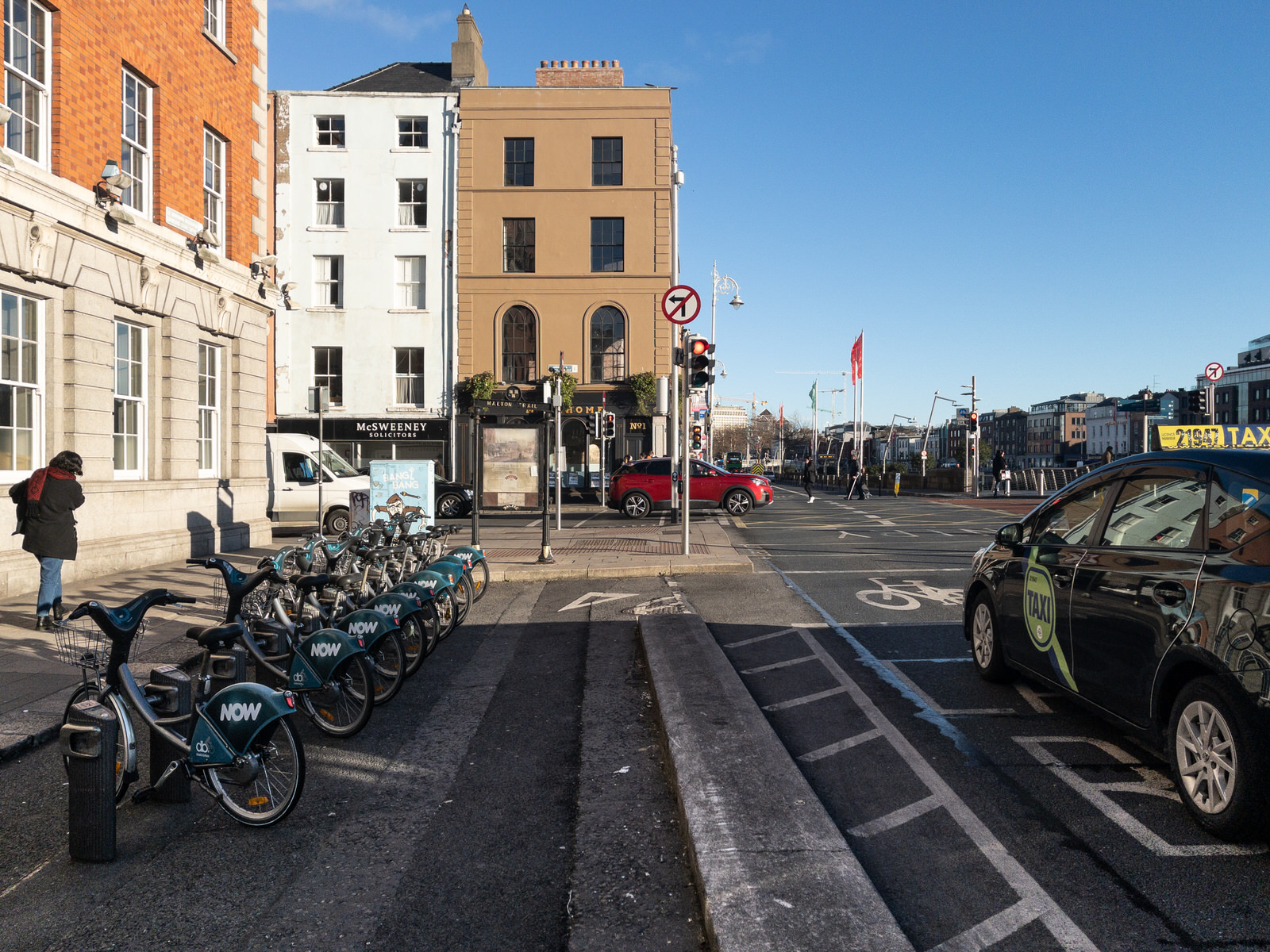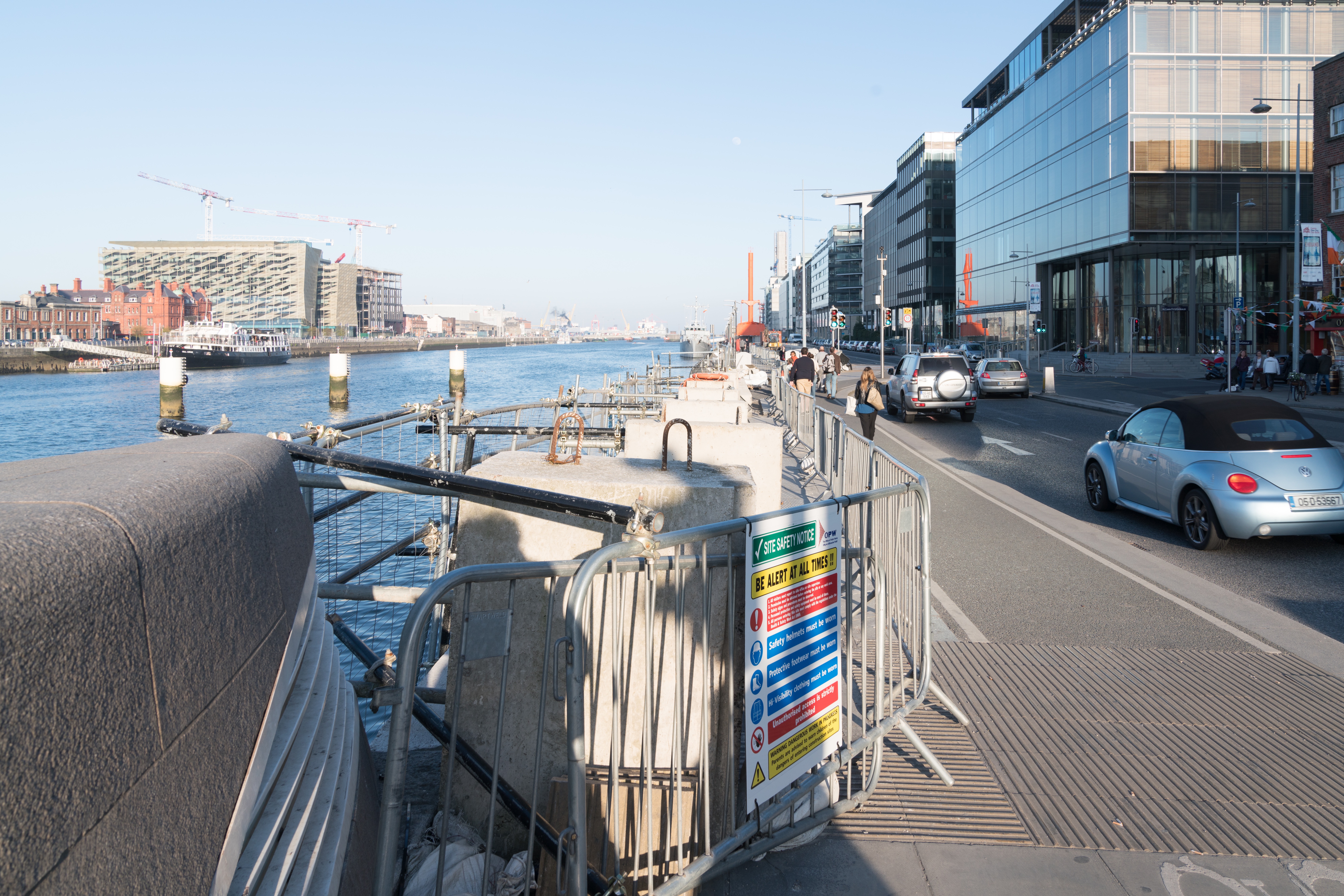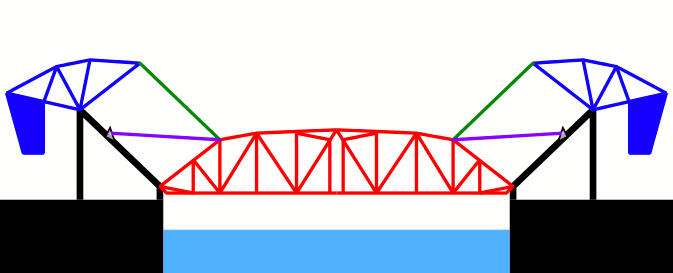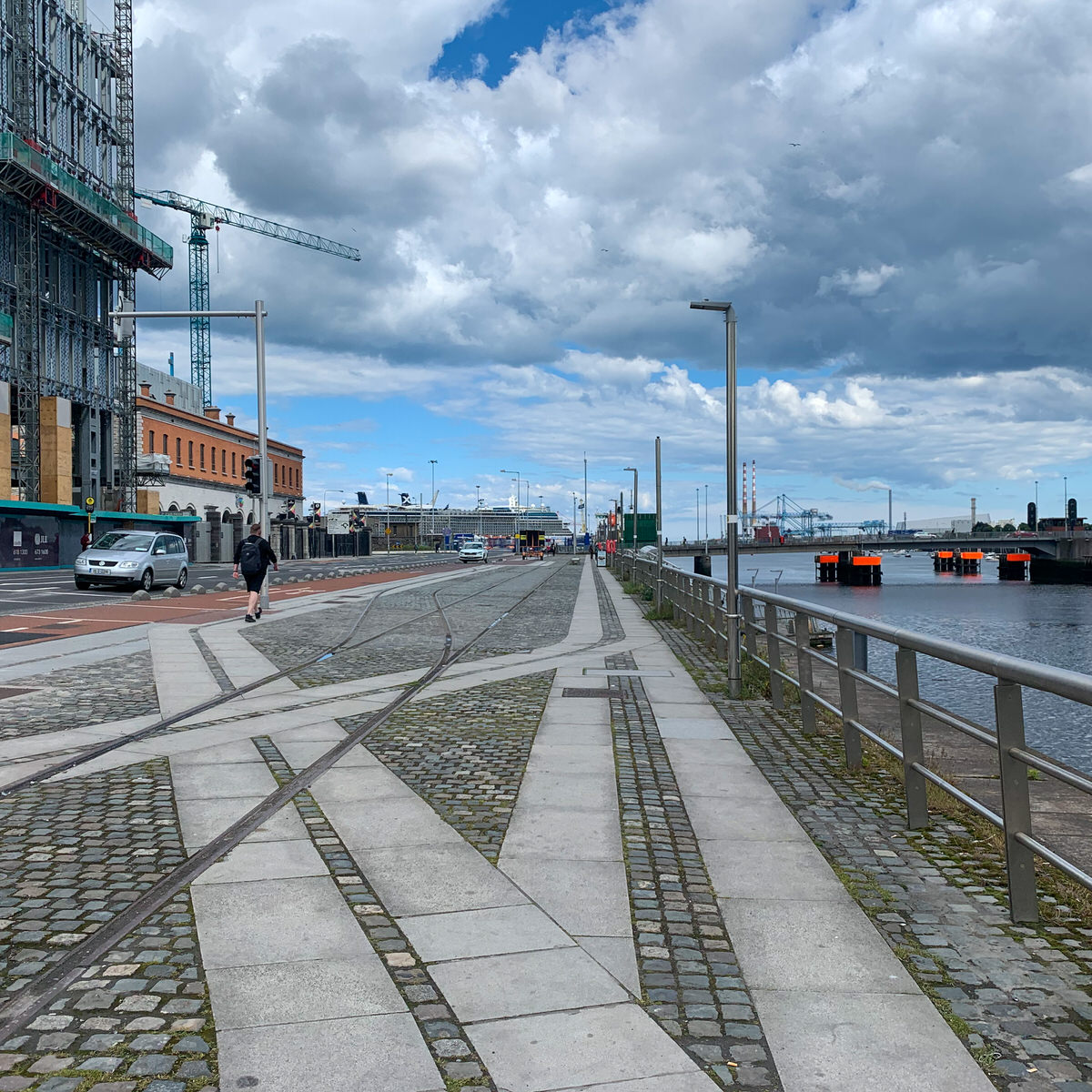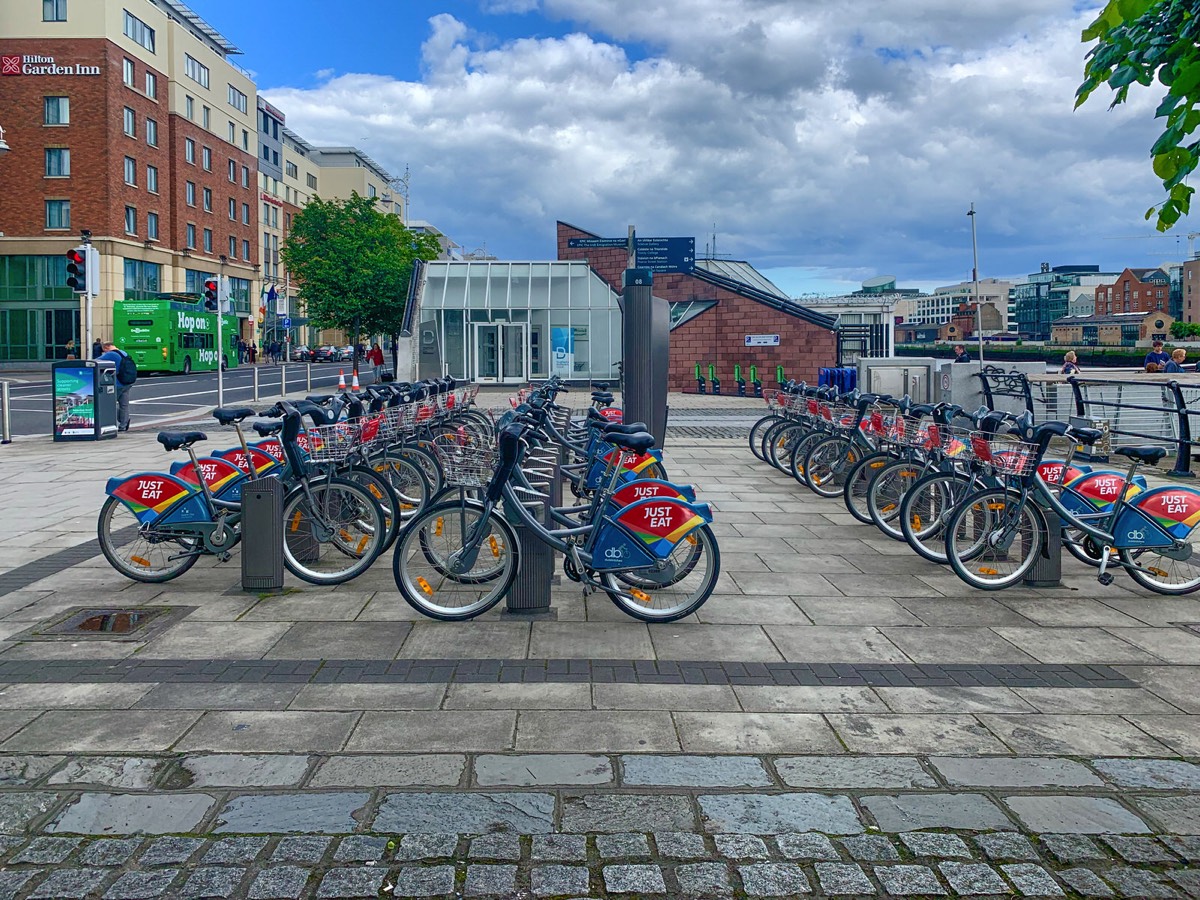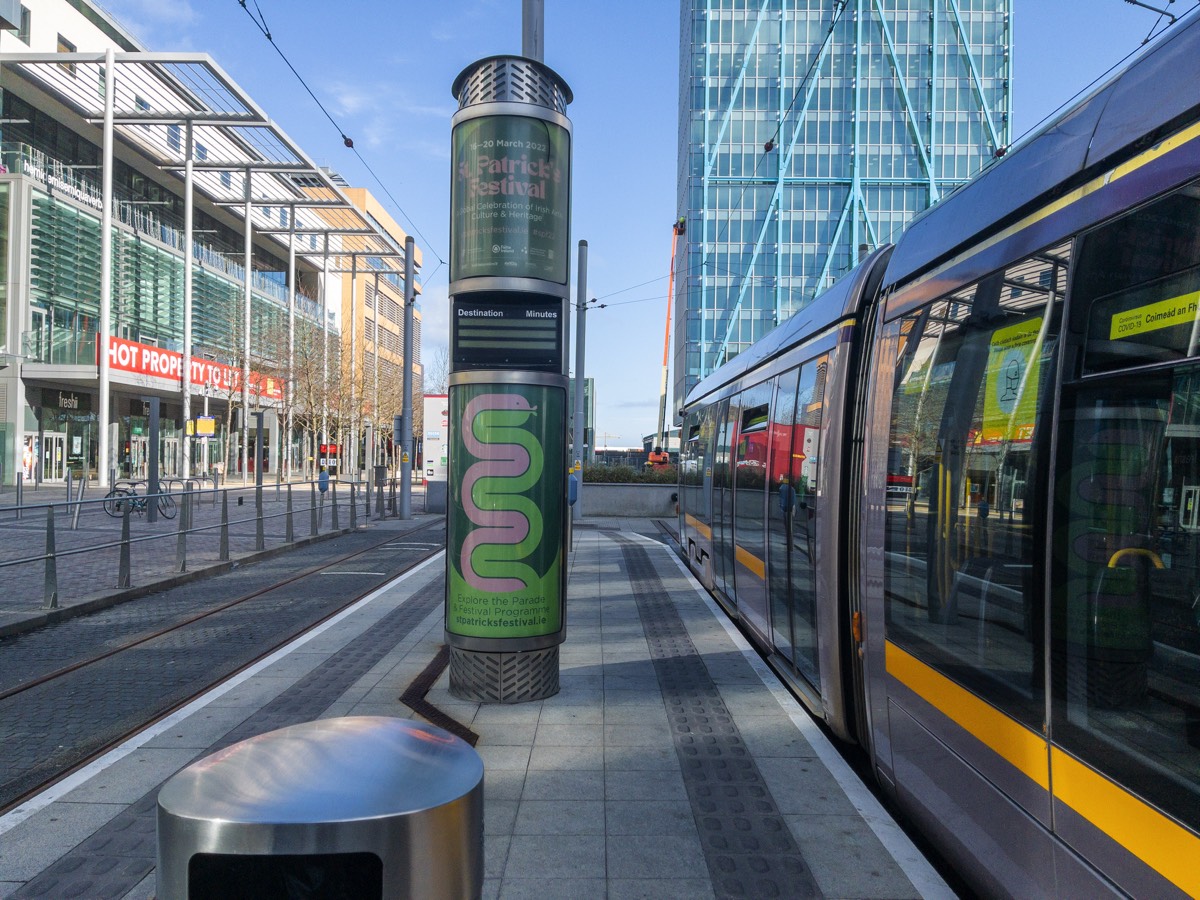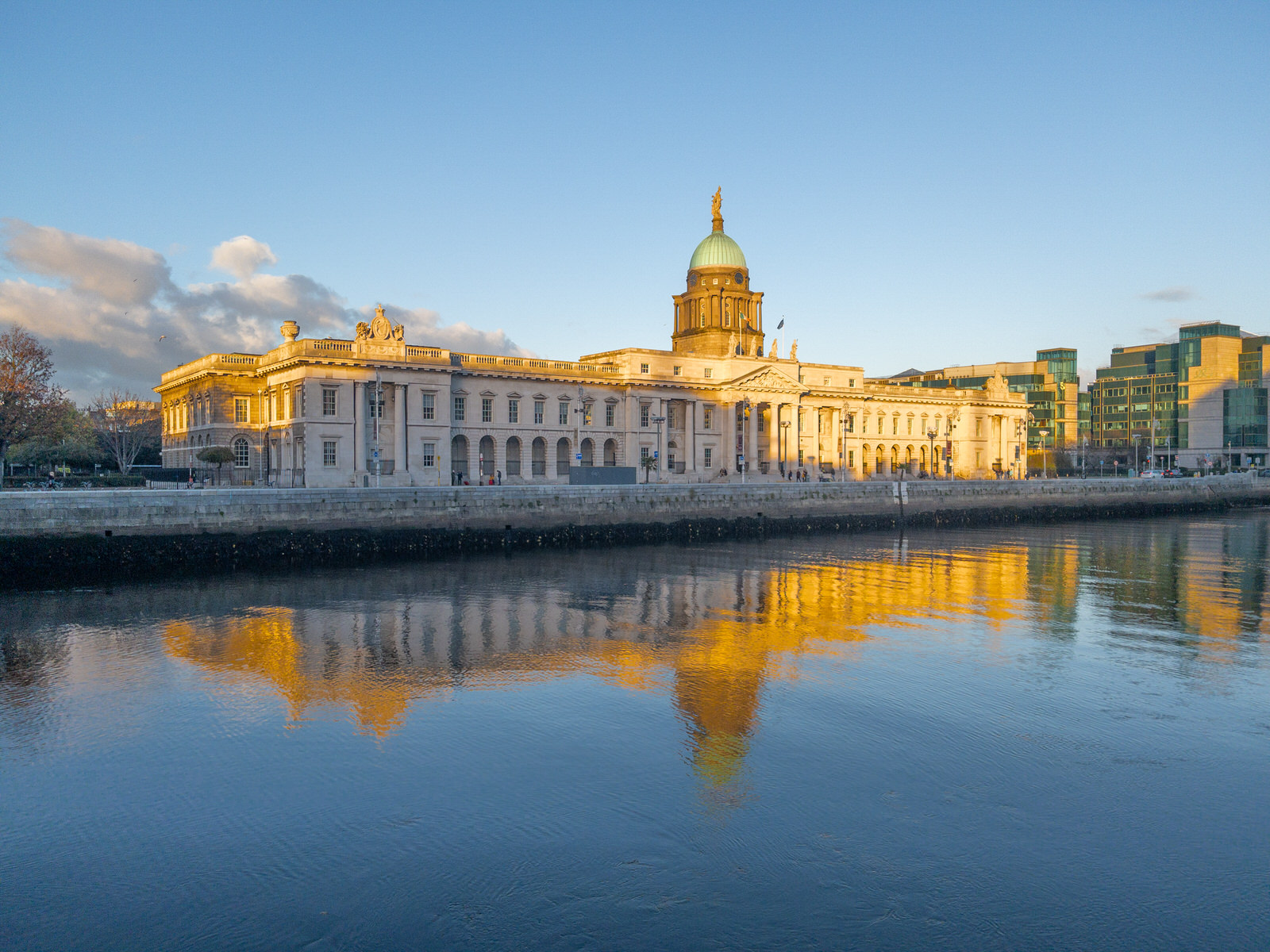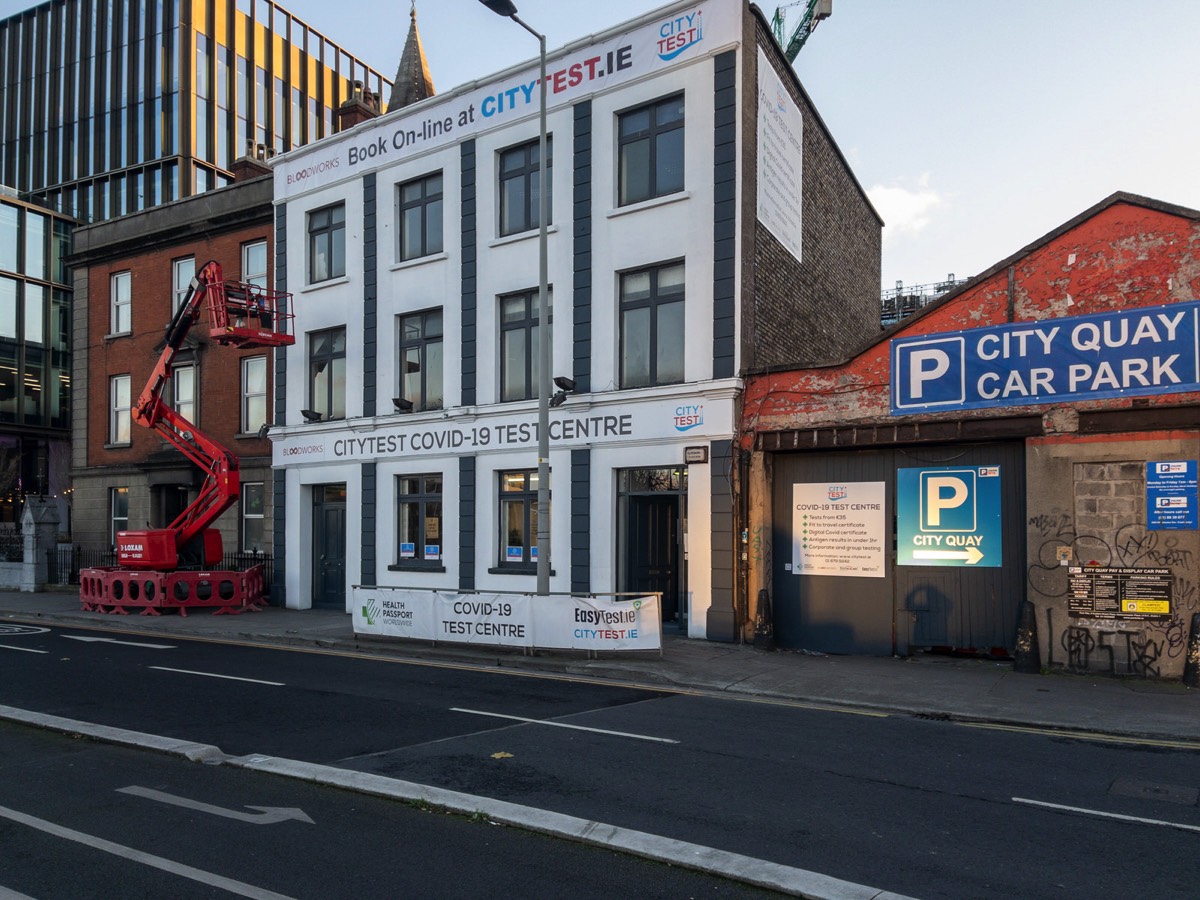DUBLIN QUAYSAREAS OF DUBLIN
JAMES JOYCE BRIDGEULYSSES WAS PUBLISHED 2 FEBRUARY 1922
The James Joyce Bridge is a road bridge spanning the River Liffey in Dublin, Ireland, joining the south quays to Blackhall Place on the north side.
Designed by Spanish architect Santiago Calatrava, it is a single-span structural steel design, 40 m (131 ft) long. The deck is supported from two outward angled arches, the silhouette of which is sometimes compared to the shape of an open book.
The bridge was built by Irishenco Construction, using pre-fabricated steel sections from Harland and Wolff of Belfast.
The bridge is named for the famous Dublin author James Joyce, and was opened on 16 June 2003 (Bloomsday). Joyce's short story "The Dead" is set in Number 15 Usher's Island, the house facing the bridge on the south side.
In the spring of 1921, Paris bookseller Sylvia Beach boasted about her plans to publish a novel she deemed a masterpiece that would be "ranked among the classics in English literature".
On 2 February 1922, Beach published the first book edition of Ulysses, just in time for Joyce's 40th birthday.
ARRAN QUAYJANUARY 2022
The church was built between 1835 and 1837 to the design of Patrick Byrne who also designed nearby St Audoen's Catholic Church and the Church of the Immaculate Conception (Adam and Eve's) on Merchants Quay. Eamonn and Sinead De Valera were married at St. Paul's in 1910 and in 1852 Captain Charles Boycott married Annie Dunne. It is currently (2022) closed to the public after a decline in numbers living in the parish. The church is used currently by a Catholic youth group and by the St. Gregrorios Jacobite Syrian Christian Church.
The church was designed by Patrick Byrne and built between 1835 and 1844, not long after Catholic emancipation. The front has a granite portico with four Ionic columns. The three-stage Italianate belltower, with its copper dome, was completed in 1843 and is a visual focal point along the quay, except where blocked by the dome of the Four Courts to the east. The inclusion of a clock, less common on Catholic Churches, implies a sense of public responsibility thus increasing the status of the building.
St Paul's contains a peal of eight bells cast by James Sheridan, of the Eagle Foundry, Church Street. These were originally hung for change ringing for most of their existence; however, they were converted into a chime (operated by one person only) in 1950, and can no longer be rung full-circle.
A statue of St. Paul above the portico tops the apex, flanked by statues of SS. Peter and Patrick. The statues are the work of Joseph Robinson Kirk and were added about 1870. The large centre door leads to the church proper, while the smaller doors on either side give access to the balcony.
The entrance hallway, inside the main door, has a mosaic floor. a marble baptismal font is in the rear of nave. It has a shallow barrel-vaulted coffered ceiling. Steps to the altar are of marble, as is the altar itself. The mural above the altar is a copy of Rubens' Conversion of St. Paul, done by F. S. Barff around 1863, which replaced an earlier depiction of the crucifixion. The apse is lit by a skylight
CITY QUAYPHOTOGRAPHED IN JANUARY 2022
The former Arts Center building positioned at the junctions of George’s Quay, Moss Street and Talbot Memorial Bridge has remained dormant for close to twenty years. However the area surrounding the building has been transformed to the point where 1-6 City Quay is the last remaining waterfront development site in Dublin’s docklands.
ABANDONED OR VANDALISEDHOMELESS ON CITY QUAY
On the day after Christmas a homeless gentleman begging at the Millennium Bridge told me that his tent in the Phoenix Park had been set on fire and at the time I was not fully inclined to believe him but since then I have noticed that a number of "homeless tents" around the city centre have either been abandoned or vandalised.
ASTON QUAYTEMPLE BAR LAUNDRY
Aston Quay was originally laid out in the late seventeenth century, on land reclaimed from the River Liffey, and was named after Henry Aston, a Dublin merchant. Both it and Crampton Quay were rebuilt in the late eighteenth century as part of the Wide Street Commission's work to construct a continuous quayside and associated thoroughfare along the south side of the River Liffey.
CHANCERY STREETFOLLOWING THE TRAM TRACKS
The Four Courts tram stop [which will also service the new Hampton By Hilton Hotel] is located on Chancery Street which runs behind the Four Courts Ireland's most prominent courts building, located on Inns Quay in Dublin. The Four Courts is the principal seat of the Supreme Court, the Court of Appeal, the High Court and the Dublin Circuit Court. Until 2010 the building also housed the Central Criminal Court; this is now located in the Criminal Courts of Justice building.
FOUNTAINWOLFE TONE QUAY
I have frequently complained that the majority of fountains and water features in Dublin are inactive or dry. However, today, I was surprised to see that this installation on Wolf Tone Quay actually had water but maybe it was because of recent heavy rains. If you examine the photographs you may notice that the water jets are inactive.
Wolfe Tone Quay is one of several quays along the Liffey, part of maritime developments within the city stretching back to the thirteenth century. Formerly known as Albert Quay, but known as Wolfe Tone Quay since the early twentieth century, this structure dates from the early nineteenth century and is the most westerly of the northern quays. The quay wall is of well-built ashlar granite and presents a strong visual statement. The quays are of significance in the context of the economic and maritime development of Dublin city as one of Ireland’s principal ports. They are representative of early nineteenth-century engineering technology.
UPPER ORMOND QUAYWITHOUT THE ORMOND HOTEL
The Dublin quays refers to the two roadways and quays that run along the north and south banks of the River Liffey in Dublin. The stretches of the two continuous streets have several different names. However, all but three of the names (Swift's Row, Bachelors Walk and Usher's Island) share the same "Quay" designation. The quays have played an important part in Dublin's history.
The name designations of the north roadway are (from west to east): Wolfe Tone Quay, Sarsfield Quay, Ellis Quay, Arran Quay, Inns Quay, Upper Ormond Quay, Lower Ormond Quay, Bachelors Walk, Eden Quay, Custom House Quay and North Wall Quay.
THE CAMPSHIRESSIR JOHN ROGERSON'S QUAY
Sir John Rogerson's Quay is a street and quay in Dublin on the south bank of the River Liffey between City Quay in the west and Britain Quay. Named for politician and property developer Sir John Rogerson (1648–1724), the quay was formerly part of Dublin Port. It has some of the few remaining campshire warehouses in Dublin.
INTERESTING OLD BRIDGEALONG THE RIVER LIFFEY
There are two Scherzer rolling lift bridges in the Docklands area of Dublin North Wall Quay and Custom House Quay, Dublin 1
A WALK ALONG NORTH WALL QUAYALONG THE RIVER LIFFEY
North Wall Quay retains the most obvious links with industry, being located closest to the functioning docks, and bearing remnants of nineteenth-century railway infrastructure. It also has the most open aspect of all the quays, being closer to the sea. The quays form an important part of maritime developments within the city stretching back to the thirteenth century. They are reminders of the economic and maritime development of Dublin as Ireland's principal port.
DUBLINBIKES DOCKING STATIONS NORTH WALL QUAY 2019
Dublinbikes is a public bicycle rental scheme which has operated in Dublin since 2009.
At its launch, the scheme, which is sponsored by JCDecaux, used 450 French-made unisex bicycles with 40 stations. By 2011 this had expanded to 550 bicycles and 44 stations, and in 2013 it was announced that a major expansion of the scheme would add a further 950 bikes and another 58 hire points. Dublin was the 17th city to implement such a scheme, and it was considered one of the most successful bike sharing schemes in the world, however in recent times progress has stalled with only 2 of 14 phases being rolled out. Currently the scheme loses €376,000 a year, leading to further expansion of Dublin Bikes being put on hold.
THE POINT VILLAGE AREAPHOTOGRAPHED IN 2019
This is now where the Luas Tram (red line) terminus is located.
The area has undergone much change since I photographed it in 2019.
A building was constructed in 1878 as a train depot to serve the nearby busy port. Among railwaymen it was always known as "The Point Store". In the late 1980s, after many years of neglect and disuse, it was bought by local developer, Harry Crosbie along with Apollo Leisure (now Live Nation) fitted out the venue with balconies, offices and backstage facilities. Before it was renovated, U2 recorded the second track of their 1988 album, Rattle and Hum, "Van Diemen's Land" there, and footage of performances of this song and "Desire" from the building appear in the accompanying Rattle and Hum movie.
Over the years the area nearby became the The Point Village, a commercial and residential development in the North Wall area of Dublin. The elements of the €800 million development completed to date include offices and residential and hotel accommodation, a small shopping centre, a cinema, a museum and a five-level underground car park. The development ran into a number of problems and was taken over by NAMA in April 2013.
THE QUAYS OF DUBLINON THE RIVER LIFFEY
The Dublin quays refers to the two roadways and quays that run along the north and south banks of the River Liffey in Dublin, Ireland. The stretches of the two continuous streets have several different names. However, all but three of the names (Swift's Row, Bachelors Walk and Usher's Island) share the same "Quay" designation. The quays have played an important part in Dublin's history.
Much of the southern roadway and about half of the northern roadway is part of the R148 road while the other half of the northern roadway is part of the R801 road.
Both roadways run approximately 4.3 km (2.7 mi) from Sean Heuston Bridge in the west. The eastern end of the north roadway is at East-Link Bridge while the south roadway turns southward at the Grand Canal. Seventeen bridges cross the river along the line of The Quays; three of them are exclusively pedestrian bridges, one a railway bridge, one other for Luas trams (with another planned) and pedestrians, and the remainder for vehicular and pedestrian use.
The name designations of the north roadway are (from west to east): Wolfe Tone Quay, Sarsfield Quay, Ellis Quay, Arran Quay, Inns Quay, Upper Ormond Quay, Lower Ormond Quay, Bachelors Walk, Eden Quay, Custom House Quay and North Wall Quay.
The name designations of the south roadway are (from west to east): Victoria Quay, Usher's Island, Usher's Quay, Merchant's Quay, Wood Quay, Essex Quay, Wellington Quay, Crampton Quay, Aston Quay, Burgh Quay, George's Quay, City Quay, Sir John Rogerson's Quay and Britain Quay.
THE CUSTOM HOUSEON LIFFEY QUAYS
This architectural icon stands on the Liffey quays, which were once Ireland’s major trade route to the wider world. The architect James Gandon completed the building, a masterpiece of European neoclassicism, in 1791. Admire the decorative detail of Edward Smyth's beautifully executed stonework carvings on the exterior and the famous carved keystones depicting the terrible heads of the river gods. There are 14 of these – one for every major river of Ireland.
CITYTEST COVID-19 TEST CENTRE THIS WAS A VERY COLOURFUL BUILDING
CITYTEST COVID-19 TEST CENTRE - THIS WAS A VERY COLOURFUL BUILDING
Back in 2012 St Marys creche was transformed by the Dulux team for the Let's Colour project. Located in Dublin city centre, it has already become an iconic building in the city and the children were delighted with the colourful transformation made to their pre-school.
Commercial DisclosurePLEASE NOTE THAT LINKS BELOW MAY REDIRECT YOU TO THE AMAZON LOCATION MOST LIKELY TO SHIP TO YOUR ADDRESS
You will find links to buy products from Amazon, Google and other partners. If you click on these links, you’ll find that the URL includes a small extra piece of text which identifies that the click came from my websites. This text is an affiliate code, and it means that I get a small percentage of the money you spend if you choose to buy that product, or, in some cases, other products from the site soon after. These affiliate links help pay the costs of producing my websites and ensure that the content is free to you.

Zeiss Batis 85mm f/1.8 Lens for Sony E Mount, Black
I HAVE THIS AND THE 135mm LENS
VERSATILE FULL-FRAME LENS: The powerful lens for the mirrorless full-frame system of Sony fulfills the highest requirements. Despite its compact design, the image meets the expectations of professional photographers. EXCELLENT RESOLUTION AND HIGH CONTRAST: Richly saturated and vivid colours are a must in the creation of lasting impressions. However, stray light within an optical system leads to a lightening of the image that is particularly noticeable in the shadows. This reduces image contrast, with the result that exposures lack contrast and appear faded. To avoid this, ZEISS combines various specially developed technologies to reduce the undesirable effects of stray light. ROBUST AND WEATHERPROOF METAL CONSTRUCTION: Thanks to features that are designed to keep out dust and spray water, the lens is perfectly suited for critical outdoor conditions. It is also designed for many years of intensive use. SMOOTH AND RELIABLE AUTOFOCUS: The design of the autofocus system requires an extremely accurate shifting of particular lens groups. The focusing system of ZEISS lenses is designed to ensure a robust and smooth-running autofocus mechanism with the best imaging performance.
YOU SHOULD ALSO CONSIDER THE 25mm LENS
